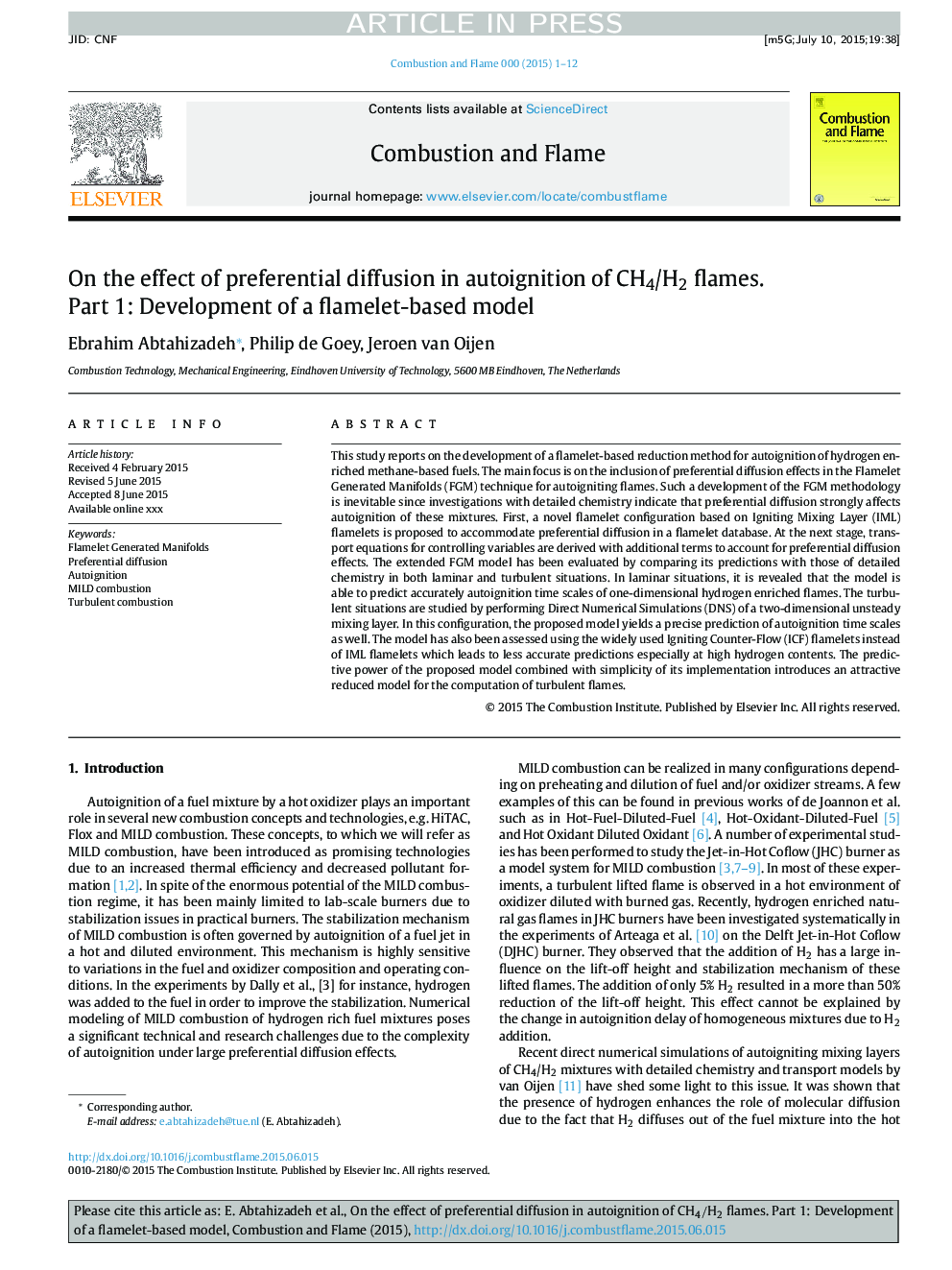| کد مقاله | کد نشریه | سال انتشار | مقاله انگلیسی | نسخه تمام متن |
|---|---|---|---|---|
| 10264376 | 457804 | 2015 | 12 صفحه PDF | دانلود رایگان |
عنوان انگلیسی مقاله ISI
Development of a novel flamelet-based model to include preferential diffusion effects in autoignition of CH4/H2 flames
دانلود مقاله + سفارش ترجمه
دانلود مقاله ISI انگلیسی
رایگان برای ایرانیان
کلمات کلیدی
موضوعات مرتبط
مهندسی و علوم پایه
مهندسی شیمی
مهندسی شیمی (عمومی)
پیش نمایش صفحه اول مقاله

چکیده انگلیسی
This study reports on the development of a flamelet-based reduction method for autoignition of hydrogen enriched methane-based fuels. The main focus is on the inclusion of preferential diffusion effects in the Flamelet Generated Manifolds (FGM) technique for autoigniting flames. Such a development of the FGM methodology is inevitable since investigations with detailed chemistry indicate that preferential diffusion strongly affects autoignition of these mixtures. First, a novel flamelet configuration based on Igniting Mixing Layer (IML) flamelets is proposed to accommodate preferential diffusion in a flamelet database. At the next stage, transport equations for controlling variables are derived with additional terms to account for preferential diffusion effects. The extended FGM model has been evaluated by comparing its predictions with those of detailed chemistry in both laminar and turbulent situations. In laminar situations, it is revealed that the model is able to predict accurately autoignition time scales of one-dimensional hydrogen enriched flames. The turbulent situations are studied by performing Direct Numerical Simulations (DNS) of a two-dimensional unsteady mixing layer. In this configuration, the proposed model yields a precise prediction of autoignition time scales as well. The model has also been assessed using the widely used Igniting Counter-Flow (ICF) flamelets instead of IML flamelets which leads to less accurate predictions especially at high hydrogen contents. The predictive power of the proposed model combined with simplicity of its implementation introduces an attractive reduced model for the computation of turbulent flames.
ناشر
Database: Elsevier - ScienceDirect (ساینس دایرکت)
Journal: Combustion and Flame - Volume 162, Issue 11, November 2015, Pages 4358-4369
Journal: Combustion and Flame - Volume 162, Issue 11, November 2015, Pages 4358-4369
نویسندگان
Ebrahim Abtahizadeh, Philip de Goey, Jeroen van Oijen,